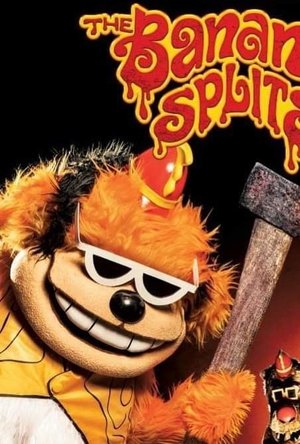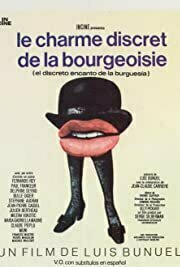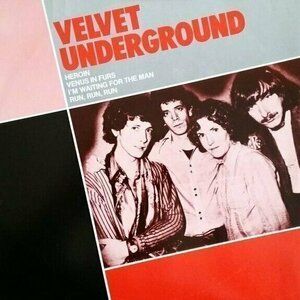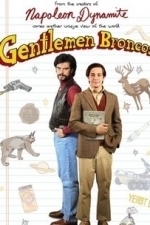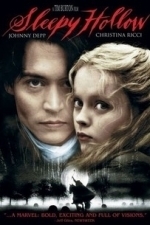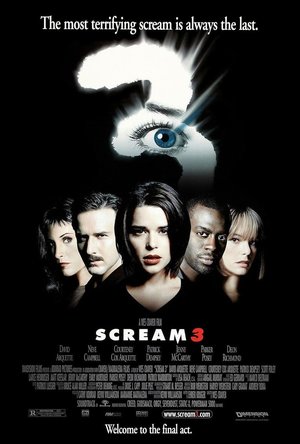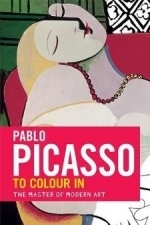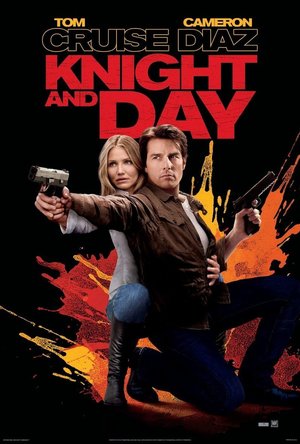Search
Search results
Lenard (726 KP) rated The Banana Splits Movie (2019) in Movies
Sep 2, 2019
You never meet your heroes
In an alternate universe, The Banana Splits Adventure Hour is still running on TV and the youth of today still watch it. Harley is a huge fan of the chaotic puppet rock quartet. Harley has few friends, his father died, and his brother is turning into a millenial. His mother gets five tickets to a taping of the Banana Splits show for Harley's birthday. Unbeknownst to the studio audience, the network has just cancelled the show. Now all those fans are in danger as the show has nothing to lose so why not oversized Sid and Marty Krofft puppets murdering people. The concept for the movie is absolutely brilliant. However, the child actors in the cast can carry the tone of the film. Some of the campiness is evident, but the filmmakers never really match the surrealism of the Sid and Marty Krofft original to counter out the horror elements the writers have included.
Edgar Wright recommended The Discreet Charm of the Bourgeoisie (1972) in Movies (curated)
Pete Wareham recommended Run, Run, Run by The Velvet Underground in Music (curated)
LoganCrews (2861 KP) rated Gentlemen Broncos (2009) in Movies
Jul 4, 2021
I get a lot of the disdain but honestly, this is pretty much the exact natural evolution of 𝘕𝘢𝘱𝘰𝘭𝘦𝘰𝘯 𝘋𝘺𝘯𝘢𝘮𝘪𝘵𝘦 - for better and for worse. Am I proving the (brilliant) point of this film - portraying the intrinsic merits of an original idea over that same idea bastardized by greedy agencies and/or people who claim to be supportive while in the same breath spitefully swearing 'their version' is inherently better - in suggesting that if Hess would have restrained his weird Hess-isms just a smidge, that this downright compelling premise would have built up a bit more crucial meat which would have made this the great film it deserves to be? Then again, if that were the case this would have also missed out on its deliriously kooky atmosphere which provides such unforgettable nuance. I don't get much out of the main characters here but the supporting ones are next-level delish - Sam Rockwell and Jemaine Clement are fully game for this ravishing surrealism and it shows. Has some funny fuckin' moments but - as with most of the director's work - I admit that it strains from time to time. It also happens to be both gorgeous design-fetishism *and* has a dope soundtrack - Jared Hess is essentially Wes Anderson if he was obsessed with gradeschool potty humor.
Kirk Bage (1775 KP) rated The Discreet Charm of the Bourgeoisie (1972) in Movies
Jan 28, 2021
The self confessed king of cinema surrealism, Luis Buñuel has 15 feature films listed as 7.5 or higher on IMDb, proving his life’s work is more loved and respected as you might think. This title was the only one I had really heard of being talked about by serious film folk that stuck in my mind, so it was as good a place as any to start with. It is an odd beast that I had a little trouble getting onboard with. It feels entirely 70s and kitsch, and on the surface feels at times little better than The Confessions of a Window Cleaner, or some such bawdy farce. To say it is a comedy is to take comedy to mean intellectual absurdism that pokes fun at the conventions and habits that lurk inside humanity, and the sophistication that masks our base instincts and flaws. I got the “joke”, it just all feels very dated now.
The cast have a lot of fun in the dreamlike landscape of manners and appetites, and the symbolism that abounds is indeed quite clever and arch if you want to analyse it. What I did like is how it feels increasingly like an actual dream, where things done and said begin to lose true meaning, and events and places merge into one flow of madness. You can definitely see a lot of ideas here that have been borrowed by other films since, and I appreciate what it tries to do, but ultimately this one left me a little cold. It has a pompous and smug air about it that is not for me, although I totally understand why it is held in high regard. I will probably never choose to watch it again.
The cast have a lot of fun in the dreamlike landscape of manners and appetites, and the symbolism that abounds is indeed quite clever and arch if you want to analyse it. What I did like is how it feels increasingly like an actual dream, where things done and said begin to lose true meaning, and events and places merge into one flow of madness. You can definitely see a lot of ideas here that have been borrowed by other films since, and I appreciate what it tries to do, but ultimately this one left me a little cold. It has a pompous and smug air about it that is not for me, although I totally understand why it is held in high regard. I will probably never choose to watch it again.
LeftSideCut (3776 KP) rated Sleepy Hollow (1999) in Movies
Apr 20, 2020 (Updated Apr 20, 2020)
Sleepy Hollow is one of those films that I will always love. I first saw it when I was 13, when DVDs were still pretty new, and I would watch it over and over again.
It's just about creepy enough to offer itself to horror fans, and has the right amount of Tim Burton campiness to still appeal to younger audiences (not too young mind, plenty of blood flying about).
Johnny Depp plays Ichabod Crane, a constable sent from New York to the small town of Sleepy Hollow to investigate a series of bizarre murders, at the tail end of the 1700s.
The townsfolk are gripped with fear, convinced that the murders are the work of the fabled Headless Horseman, but Ichabod is certain that there's a less supernatural involvement behind the scenes.
The 18th Century setting is perfect for Burton's gothic style. The whole film is draped in a misty asthethic, lending it a cold and dreary atmosphere.
This is further complimented by Danny Elfman's incredible church-organ-heavy score.
The Horseman himself looks ghostly and makes for some unforgettable shots as he chases down and decapitates his way through the cast.
Said cast is a heavy duty one as well. Johnny Depp is front and centre, pretty much just being typical Johnny Depp, but it works wonders with Ichabod's almost mad-scientist character.
The rest of the cast boasts the likes of Christina Ricci, Michael Gambon, Christopher Walken, Miranda Richardson, Ian McDiarmid, Michael Gough, Richard Griffiths, Christopher Lee, Jeffrey Jones... It's an impressive list.
Some of the acting is a bit overboard at times (looking at you Christopher Walken) but it kind of adds a bit of surrealism to the whole affair.
The effects are pretty solid as well. Burton's approach to using a large amount of practical effects is admirable, and what CGI is used is subtle enough to not show the films age.
Despite it cheesyness, Sleepy Hollow manages to be both a dark and fun horror adventure, that I always enjoy watching and remains a highlight in Tim Burton's resume.
It's just about creepy enough to offer itself to horror fans, and has the right amount of Tim Burton campiness to still appeal to younger audiences (not too young mind, plenty of blood flying about).
Johnny Depp plays Ichabod Crane, a constable sent from New York to the small town of Sleepy Hollow to investigate a series of bizarre murders, at the tail end of the 1700s.
The townsfolk are gripped with fear, convinced that the murders are the work of the fabled Headless Horseman, but Ichabod is certain that there's a less supernatural involvement behind the scenes.
The 18th Century setting is perfect for Burton's gothic style. The whole film is draped in a misty asthethic, lending it a cold and dreary atmosphere.
This is further complimented by Danny Elfman's incredible church-organ-heavy score.
The Horseman himself looks ghostly and makes for some unforgettable shots as he chases down and decapitates his way through the cast.
Said cast is a heavy duty one as well. Johnny Depp is front and centre, pretty much just being typical Johnny Depp, but it works wonders with Ichabod's almost mad-scientist character.
The rest of the cast boasts the likes of Christina Ricci, Michael Gambon, Christopher Walken, Miranda Richardson, Ian McDiarmid, Michael Gough, Richard Griffiths, Christopher Lee, Jeffrey Jones... It's an impressive list.
Some of the acting is a bit overboard at times (looking at you Christopher Walken) but it kind of adds a bit of surrealism to the whole affair.
The effects are pretty solid as well. Burton's approach to using a large amount of practical effects is admirable, and what CGI is used is subtle enough to not show the films age.
Despite it cheesyness, Sleepy Hollow manages to be both a dark and fun horror adventure, that I always enjoy watching and remains a highlight in Tim Burton's resume.
LeftSideCut (3776 KP) rated Scream 3 (2000) in Movies
Nov 7, 2020 (Updated Nov 7, 2020)
The third entry in the Scream franchise is a mixed bag to say the least. It takes everything that made the first two so enjoyable, and throws more of it at the audience, but unfortunately it just doesn't land as well as one would hope.
Scream is known for being a meta commentary on the general ins and outs of the horror genre, but I would argue that it goes a little overboard this time around. A big part of the plot revolves around a huge retcon, changing the established backstory set up in the first movie. Cue a somewhat forced cameo from fan favourite character Randy to explain the rules of a trilogy to the surviving leads (and poke fun at this plot development) but it fails to distract from the fact that this narrative is a complete mess.
The killers motives and patterns are unclear and constantly change, and the eventual twist and identify reveal of this movies Ghostface is hugely underwhelming, and is just re treading ground that has already been explored in the previous Scream films. Also, that voice changing plot device is just dumb.
In response to the public outcry of media violence following the Columbine shootings, there is a lot less gore this time around which also hurts the overall experience. It loses its shock factor that was particularly prevalent in the original, and gives the film a sort of blunt edge, and instead focuses on the hit and miss comedy aspect.
All this being said, Scream 3 is still enjoyable when it needs to be. The returning trio of Neve Campbell, Courtney Cox, and David Arquette is essential to that particular element. These characters have been fleshed out well over these movies, and seeing them together on screen is always a treat. Everyone else is largely forgettable, but the film manages to shoehorn in cameos from Jay and Silent Bob, and Carrie Fisher, which just adds to surrealism of it all.
Not Wes Craven's finest hour by a long shot, but still an enjoyable enough slasher, and still a part of a hugely important horror series.
Scream is known for being a meta commentary on the general ins and outs of the horror genre, but I would argue that it goes a little overboard this time around. A big part of the plot revolves around a huge retcon, changing the established backstory set up in the first movie. Cue a somewhat forced cameo from fan favourite character Randy to explain the rules of a trilogy to the surviving leads (and poke fun at this plot development) but it fails to distract from the fact that this narrative is a complete mess.
The killers motives and patterns are unclear and constantly change, and the eventual twist and identify reveal of this movies Ghostface is hugely underwhelming, and is just re treading ground that has already been explored in the previous Scream films. Also, that voice changing plot device is just dumb.
In response to the public outcry of media violence following the Columbine shootings, there is a lot less gore this time around which also hurts the overall experience. It loses its shock factor that was particularly prevalent in the original, and gives the film a sort of blunt edge, and instead focuses on the hit and miss comedy aspect.
All this being said, Scream 3 is still enjoyable when it needs to be. The returning trio of Neve Campbell, Courtney Cox, and David Arquette is essential to that particular element. These characters have been fleshed out well over these movies, and seeing them together on screen is always a treat. Everyone else is largely forgettable, but the film manages to shoehorn in cameos from Jay and Silent Bob, and Carrie Fisher, which just adds to surrealism of it all.
Not Wes Craven's finest hour by a long shot, but still an enjoyable enough slasher, and still a part of a hugely important horror series.
Hazel (1853 KP) rated Picasso: The Colouring Book in Books
Jul 15, 2017
Educational and Fun
For a full review, including visual examples, please follow this link: https://hazelstainer.wordpress.com/20...
...
Pablo Picasso: To Colour In was published in April 2016 with the intention of using the popular fad to educate readers/colouring book enthusiasts about the techniques and secrets of the great master. Each work included in the book has a brief paragraph explaining what it is (in case you cannot tell) and a few details about Picasso’s intentions or the events happening in his life at the time.
...
Naturally, it would be impossible to produce a book of all Picasso’s recorded works, but the editors of this particular colouring book have carefully selected examples that span the majority of his life, thus encompassing the different styles he experimented with.
The author of the text – presumably Frédérique Cassegrain, who also wrote the biography and information for each included artwork – gives helpful advice about how to colour in the outlined versions of Picasso’s paintings. The paper is thick enough to be suitable for paints, particular Gouache, which is water soluble and easily blended. Alternatively, coloured pencils may be used, preferably of artistic quality, which may be more suitable for those less confident in art and design. Another option, although not mentioned by the author, are felt-tip pens. Usually, these should be avoided due to ink bleeding through the page, however, the paper is single sided, so there is no chance of damaging the following colouring page in the book.
Purchasing Pablo Picasso: To Colour In and completing the book, provides not only hours of fun and relaxation, but an opportunity to discover and understand the artist. Unlike at a gallery where the brain may switch off, being able to go away and return to the book gives us time to absorb the information and concentrate more clearly on the details of each painting.
Opposite each colouring page is a copy of the original in full colour, meaning that, if one desired, one could replicate Picasso’s work as closely as possible. By doing, rather than just looking, we begin to understand the colour choices, piece together the geometric shapes to form an image and begin to understand the thought processes of the artist.
Interestingly, there are two paintings that stand out amongst all the others. These were produced during and after the First World War, a time when Picasso returned to a more classical style of artwork. These are The Pipes of Pan (1923) and The Bathers (1918). Both show a completely different side to Picasso and would not immediately be recognised as his own work. Despite not being entirely life-like, there are no elements of Cubism or Surrealism and the colour palette is altogether natural. Picasso has focused on shading and tone to create a realistic appearance, a contrast to the flattened portraits he is known for.
...
Pablo Picasso: To Colour In will appeal to artists, art historians and other creatives with its contrast of light relief and in-depth knowledge. The book is available online at retailers such as Amazon and The Book Depository from approximately £6. If Picasso is not your thing, there are other artists available in the series of colouring books, including Klimt, Hokusai (Japanese Art), Monet, Van Gogh, Caillebotte and Manet (Impressionists), and Paul Klee. Whatever your preference, prepare to learn whilst you are relaxing and having fun.
...
Pablo Picasso: To Colour In was published in April 2016 with the intention of using the popular fad to educate readers/colouring book enthusiasts about the techniques and secrets of the great master. Each work included in the book has a brief paragraph explaining what it is (in case you cannot tell) and a few details about Picasso’s intentions or the events happening in his life at the time.
...
Naturally, it would be impossible to produce a book of all Picasso’s recorded works, but the editors of this particular colouring book have carefully selected examples that span the majority of his life, thus encompassing the different styles he experimented with.
The author of the text – presumably Frédérique Cassegrain, who also wrote the biography and information for each included artwork – gives helpful advice about how to colour in the outlined versions of Picasso’s paintings. The paper is thick enough to be suitable for paints, particular Gouache, which is water soluble and easily blended. Alternatively, coloured pencils may be used, preferably of artistic quality, which may be more suitable for those less confident in art and design. Another option, although not mentioned by the author, are felt-tip pens. Usually, these should be avoided due to ink bleeding through the page, however, the paper is single sided, so there is no chance of damaging the following colouring page in the book.
Purchasing Pablo Picasso: To Colour In and completing the book, provides not only hours of fun and relaxation, but an opportunity to discover and understand the artist. Unlike at a gallery where the brain may switch off, being able to go away and return to the book gives us time to absorb the information and concentrate more clearly on the details of each painting.
Opposite each colouring page is a copy of the original in full colour, meaning that, if one desired, one could replicate Picasso’s work as closely as possible. By doing, rather than just looking, we begin to understand the colour choices, piece together the geometric shapes to form an image and begin to understand the thought processes of the artist.
Interestingly, there are two paintings that stand out amongst all the others. These were produced during and after the First World War, a time when Picasso returned to a more classical style of artwork. These are The Pipes of Pan (1923) and The Bathers (1918). Both show a completely different side to Picasso and would not immediately be recognised as his own work. Despite not being entirely life-like, there are no elements of Cubism or Surrealism and the colour palette is altogether natural. Picasso has focused on shading and tone to create a realistic appearance, a contrast to the flattened portraits he is known for.
...
Pablo Picasso: To Colour In will appeal to artists, art historians and other creatives with its contrast of light relief and in-depth knowledge. The book is available online at retailers such as Amazon and The Book Depository from approximately £6. If Picasso is not your thing, there are other artists available in the series of colouring books, including Klimt, Hokusai (Japanese Art), Monet, Van Gogh, Caillebotte and Manet (Impressionists), and Paul Klee. Whatever your preference, prepare to learn whilst you are relaxing and having fun.
Hazel (1853 KP) rated Picasso: The Colouring Book in Books
Dec 7, 2018
For a full review, including visual examples, please follow this link: https://hazelstainer.wordpress.com/2017/07/14/picasso-coloured-in/
...
<i>Pablo Picasso: To Colour In</i> was published in April 2016 with the intention of using the popular fad to educate readers/colouring book enthusiasts about the techniques and secrets of the great master. Each work included in the book has a brief paragraph explaining what it is (in case you cannot tell) and a few details about Picasso’s intentions or the events happening in his life at the time.
...
Naturally, it would be impossible to produce a book of all Picasso’s recorded works, but the editors of this particular colouring book have carefully selected examples that span the majority of his life, thus encompassing the different styles he experimented with.
The author of the text – presumably Frédérique Cassegrain, who also wrote the biography and information for each included artwork – gives helpful advice about how to colour in the outlined versions of Picasso’s paintings. The paper is thick enough to be suitable for paints, particular Gouache, which is water soluble and easily blended. Alternatively, coloured pencils may be used, preferably of artistic quality, which may be more suitable for those less confident in art and design. Another option, although not mentioned by the author, are felt-tip pens. Usually, these should be avoided due to ink bleeding through the page, however, the paper is single sided, so there is no chance of damaging the following colouring page in the book.
Purchasing Pablo Picasso: To Colour In and completing the book, provides not only hours of fun and relaxation, but an opportunity to discover and understand the artist. Unlike at a gallery where the brain may switch off, being able to go away and return to the book gives us time to absorb the information and concentrate more clearly on the details of each painting.
Opposite each colouring page is a copy of the original in full colour, meaning that, if one desired, one could replicate Picasso’s work as closely as possible. By doing, rather than just looking, we begin to understand the colour choices, piece together the geometric shapes to form an image and begin to understand the thought processes of the artist.
Interestingly, there are two paintings that stand out amongst all the others. These were produced during and after the First World War, a time when Picasso returned to a more classical style of artwork. These are The Pipes of Pan (1923) and The Bathers (1918). Both show a completely different side to Picasso and would not immediately be recognised as his own work. Despite not being entirely life-like, there are no elements of Cubism or Surrealism and the colour palette is altogether natural. Picasso has focused on shading and tone to create a realistic appearance, a contrast to the flattened portraits he is known for.
...
Pablo Picasso: To Colour In will appeal to artists, art historians and other creatives with its contrast of light relief and in-depth knowledge. The book is available online at retailers such as Amazon and The Book Depository from approximately £6. If Picasso is not your thing, there are other artists available in the series of colouring books, including Klimt, Hokusai (Japanese Art), Monet, Van Gogh, Caillebotte and Manet (Impressionists), and Paul Klee. Whatever your preference, prepare to learn whilst you are relaxing and having fun.
...
<i>Pablo Picasso: To Colour In</i> was published in April 2016 with the intention of using the popular fad to educate readers/colouring book enthusiasts about the techniques and secrets of the great master. Each work included in the book has a brief paragraph explaining what it is (in case you cannot tell) and a few details about Picasso’s intentions or the events happening in his life at the time.
...
Naturally, it would be impossible to produce a book of all Picasso’s recorded works, but the editors of this particular colouring book have carefully selected examples that span the majority of his life, thus encompassing the different styles he experimented with.
The author of the text – presumably Frédérique Cassegrain, who also wrote the biography and information for each included artwork – gives helpful advice about how to colour in the outlined versions of Picasso’s paintings. The paper is thick enough to be suitable for paints, particular Gouache, which is water soluble and easily blended. Alternatively, coloured pencils may be used, preferably of artistic quality, which may be more suitable for those less confident in art and design. Another option, although not mentioned by the author, are felt-tip pens. Usually, these should be avoided due to ink bleeding through the page, however, the paper is single sided, so there is no chance of damaging the following colouring page in the book.
Purchasing Pablo Picasso: To Colour In and completing the book, provides not only hours of fun and relaxation, but an opportunity to discover and understand the artist. Unlike at a gallery where the brain may switch off, being able to go away and return to the book gives us time to absorb the information and concentrate more clearly on the details of each painting.
Opposite each colouring page is a copy of the original in full colour, meaning that, if one desired, one could replicate Picasso’s work as closely as possible. By doing, rather than just looking, we begin to understand the colour choices, piece together the geometric shapes to form an image and begin to understand the thought processes of the artist.
Interestingly, there are two paintings that stand out amongst all the others. These were produced during and after the First World War, a time when Picasso returned to a more classical style of artwork. These are The Pipes of Pan (1923) and The Bathers (1918). Both show a completely different side to Picasso and would not immediately be recognised as his own work. Despite not being entirely life-like, there are no elements of Cubism or Surrealism and the colour palette is altogether natural. Picasso has focused on shading and tone to create a realistic appearance, a contrast to the flattened portraits he is known for.
...
Pablo Picasso: To Colour In will appeal to artists, art historians and other creatives with its contrast of light relief and in-depth knowledge. The book is available online at retailers such as Amazon and The Book Depository from approximately £6. If Picasso is not your thing, there are other artists available in the series of colouring books, including Klimt, Hokusai (Japanese Art), Monet, Van Gogh, Caillebotte and Manet (Impressionists), and Paul Klee. Whatever your preference, prepare to learn whilst you are relaxing and having fun.
Gareth von Kallenbach (980 KP) rated Knight and Day (2010) in Movies
Aug 8, 2019
Knight and Day, directed by James Mangold (previous director of 3:10 to Yuma and Walk the Line), is an uninspiring, uninteresting action movie. Getting both of those words to work with the phrase “action movie” is quite a challenge, but somehow, through a group effort, it was pulled off. The movie itself gets boring primarily because the Tom Cruise and Cameron Diaz have little to no chemistry between them both. Useless action sequences merely add to the feeling that all those involved were ruining a great premise for an action/date movie.
The plot of the movie started out fun and original, but again, the lack of a spark between the two leads just led to disinterest. The director made ample use of what I’ll call the “invisible montage,” wherein one of the main characters is semi-conscious, and what happens to them is revealed in a series of blurred, but outlandishly crazy situations only a few seconds in length and increasing in surrealism. This was a clever, if overused technique, but oftentimes the entire movie felt like longer episodes of these montages, with little reason for each to be happening other than to fill the quota for requisite action sequences. Because of some poor foreshadowing in the beginning of the film, even the finale became extremely predictable and had no weight.
Tom Cruise, playing the bizarrely comic spy Roy Miller, manages to pull his weight in his role. Cruise’s special kind of natural crazy is actually an advantage to the character he is playing. His unpredictability and his utter charm kept me, at the very least, entertained throughout the film.
Cameron Diaz, playing clueless midwesterner June Havens is obviously the weak link here. She can’t seem to keep up with Cruise’s character on screen, and aside from a few cutesy moments in the film, is outclassed by her co-star, and often by members of the supporting cast as well. Diaz doesn’t have a reputation for doing in-depth character studies of her portrayals, but the very least she could do is drop the same confused face she uses for most of the movie.
Together, Cruise and Diaz lack the chemistry that would have made this a decent movie without forcing the audience to shut off the emotional parts of their brains. In fact, the key make-out scene between the two of them was so clichéd as to be boring. Looking back at the entire movie, I believe that after their first few minutes together, the rest of their interactions just felt forced.
As for the rest of the cast, I have no special complaints or accolades, but I would like to single out one individual, and say that I would have loved to see more of Peter Sarsgaard. It’s immediately obvious that knows what he is doing on screen, and he deserved a much larger role than the one given to him.
In summary, Knight and Day is definitely worth skipping out on. Wait a week and soon enough some real 4th of July action blockbusters will be coming out. We’ll be sure to let you know which ones are the real deal and which ones are the duds. It’s just too bad this one was a dud, because it definitely had a lot of potential.
The plot of the movie started out fun and original, but again, the lack of a spark between the two leads just led to disinterest. The director made ample use of what I’ll call the “invisible montage,” wherein one of the main characters is semi-conscious, and what happens to them is revealed in a series of blurred, but outlandishly crazy situations only a few seconds in length and increasing in surrealism. This was a clever, if overused technique, but oftentimes the entire movie felt like longer episodes of these montages, with little reason for each to be happening other than to fill the quota for requisite action sequences. Because of some poor foreshadowing in the beginning of the film, even the finale became extremely predictable and had no weight.
Tom Cruise, playing the bizarrely comic spy Roy Miller, manages to pull his weight in his role. Cruise’s special kind of natural crazy is actually an advantage to the character he is playing. His unpredictability and his utter charm kept me, at the very least, entertained throughout the film.
Cameron Diaz, playing clueless midwesterner June Havens is obviously the weak link here. She can’t seem to keep up with Cruise’s character on screen, and aside from a few cutesy moments in the film, is outclassed by her co-star, and often by members of the supporting cast as well. Diaz doesn’t have a reputation for doing in-depth character studies of her portrayals, but the very least she could do is drop the same confused face she uses for most of the movie.
Together, Cruise and Diaz lack the chemistry that would have made this a decent movie without forcing the audience to shut off the emotional parts of their brains. In fact, the key make-out scene between the two of them was so clichéd as to be boring. Looking back at the entire movie, I believe that after their first few minutes together, the rest of their interactions just felt forced.
As for the rest of the cast, I have no special complaints or accolades, but I would like to single out one individual, and say that I would have loved to see more of Peter Sarsgaard. It’s immediately obvious that knows what he is doing on screen, and he deserved a much larger role than the one given to him.
In summary, Knight and Day is definitely worth skipping out on. Wait a week and soon enough some real 4th of July action blockbusters will be coming out. We’ll be sure to let you know which ones are the real deal and which ones are the duds. It’s just too bad this one was a dud, because it definitely had a lot of potential.
